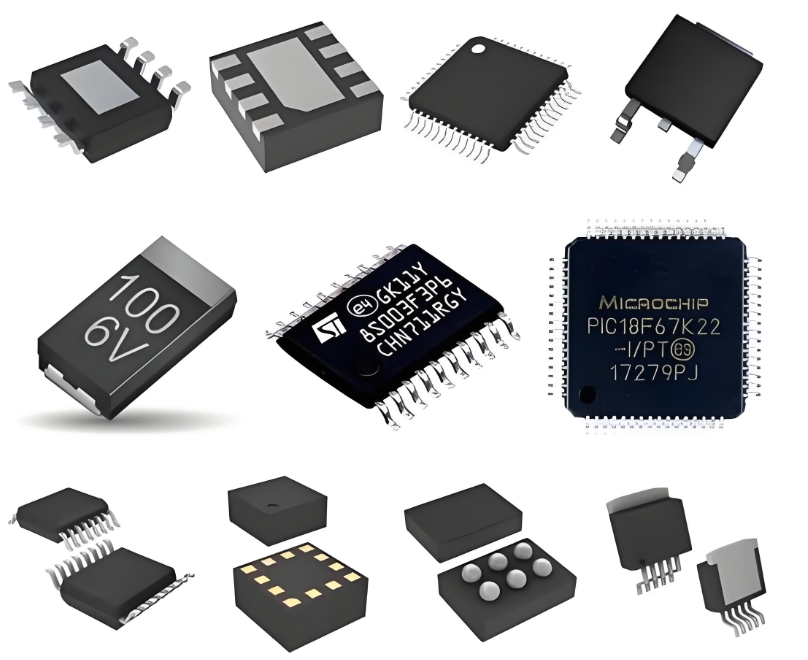**The AD7711ASQ: A Comprehensive Guide to its Architecture, Applications, and Design Considerations**
In the realm of precision data acquisition, the conversion of low-level sensor signals into accurate digital data is a critical challenge. The **AD7711ASQ from Analog Devices** stands as a cornerstone solution for such tasks, offering a complete front-end for low-frequency measurement applications. This article delves into the architecture, diverse applications, and key design considerations for this highly integrated sigma-delta (Σ-Δ) analog-to-digital converter (ADC).
**Architectural Overview: A Complete Analog Front-End**
The AD7711ASQ is more than just an ADC; it is a **highly integrated system-on-chip** designed to simplify the interface between sensors and microprocessors. Its architecture is built around a **sigma-delta modulation core**, which provides high resolution and excellent noise rejection. Key features of its architecture include:
* **Programmable Gain Front-End:** The device includes a **low-noise, programmable gain amplifier (PGA)** with gains from 1 to 128. This allows it to directly interface with very low-level signals, such as those from thermocouples or strain gauges, without requiring external amplification.
* **Σ-Δ ADC with 24-Bit Resolution:** The core of the device uses a charge-balancing sigma-delta conversion technique. This method, combined with on-chip digital filtering, achieves **exceptional 24-bit resolution without missing codes**.
* **On-Chip Digital Filtering:** A critical part of any Σ-Δ converter, the digital filter suppresses noise and provides a clean, high-resolution output. The AD7711's filter is optimized for low-frequency signals, making it ideal for measuring DC or slowly varying parameters like temperature, pressure, and weight.
* **Flexible Serial Interface:** It communicates via a **3-wire serial interface** (compatible with SPI, QSPI, Microwire, and DSP standards), making it easy to connect to a wide range of microcontrollers and processors.
**Key Applications: Where Precision is Paramount**
The combination of high resolution, integrated PGA, and robust performance makes the AD7711ASQ suitable for a wide array of demanding applications. Its primary domain is in **industrial process control and instrumentation**.
* **Weigh Scales and Strain Gauge Transducers:** The device's ability to handle small signals from bridge sensors with high accuracy makes it a perfect choice for precision weighing systems and pressure measurement.

* **Temperature Measurement:** It can directly interface with **thermocouples** and **RTDs (Resistance Temperature Detectors)**, providing a complete, linearized digital output for temperature monitoring and control loops.
* **Gas and Liquid Chromatography:** In analytical instrumentation, the high resolution and low noise are essential for detecting and quantifying minute changes in signal levels.
* **Portable Instrumentation:** Its low power consumption (3 mW typical) and single-supply operation (3V or 5V) enable its use in battery-powered, portable equipment.
**Critical Design Considerations**
Successfully implementing the AD7711ASQ requires careful attention to several design aspects to achieve its specified performance.
1. **Power Supply and Grounding:** As with any high-resolution ADC, **clean and stable power supplies are non-negotiable**. Proper decoupling with 10μF tantalum and 0.1μF ceramic capacitors placed close to the supply pins is essential. A solid, low-impedance ground plane must be used to minimize noise.
2. **Clock Source:** The device requires an external clock source (MHz range) for its modulation process. The stability of this clock directly impacts the ADC's performance. A crystal oscillator is typically recommended for optimal stability.
3. **Analog Input Configuration:** The AD7711ASQ supports both pseudo-differential and fully differential input modes. Understanding the sensor's output configuration is crucial for choosing the right mode and minimizing common-mode noise.
4. **Calibration:** The ADC offers multiple calibration modes—self-calibration, system calibration, and background calibration. Utilizing these features is critical to **nullify offset and gain errors** introduced by the ADC itself and the external signal chain, ensuring long-term accuracy.
5. **Digital Filter Synchronization:** For systems with multiple AD7711s or other synchronous sampling requirements, the "SYNC" input allows the digital filters to be simultaneously reset, ensuring all channels are sampled in phase.
**ICGOODFIND:** The AD7711ASQ remains a benchmark for integrated precision measurement. Its **all-in-one architecture** elegantly solves the complex problem of conditioning and digitizing low-frequency, low-level sensor signals. By providing **outstanding resolution, integrated programmability, and a simple serial interface**, it drastically reduces design complexity and component count for engineers developing high-accuracy systems in industrial control, instrumentation, and beyond.
**Keywords:** Sigma-Delta ADC, Programmable Gain Amplifier, Industrial Instrumentation, High-Resolution Measurement, Sensor Interface.
